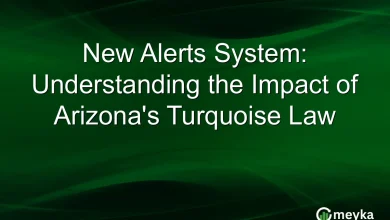Trump DOJ’s ‘Ham-Fisted’ Letter Key to Ruling Blocking Texas Gerrymander

Trump campaign lawyer Harmeet Dhillon appears at a House Committee on House Administration hearing on “American Confidence in Elections: Protecting Political Speech” on Capitol Hill in Washington, Thursday, May 11, 2023. (AP Photo/Andrew Harnik)
A federal court Tuesday delivered a devastating blow to Texas Republicans’ attempt at a mid-decade gerrymander. And the court found that a July letter sent by the U.S. Department of Justice (DOJ) — intended to justify the GOP’s aggressive redraw — effectively handed voting rights advocates a smoking gun proving it was an unconstitutional racial gerrymander.
It’s a major embarrassment for President Donald Trump’s handpicked Justice Department leaders including Attorney General Pam Bondi, a staunch Trump loyalist, and Civil Rights division chief Harmeet Dhillon, a right-wing anti-civil-rights lawyer.
Republicans hoped to carve out as many as five new safe seats to protect their fragile U.S. House majority. Instead, they are left with a stinging judicial repudiation — and the source of the damage is the Trump administration’s Justice Department.
The fallout from the ruling is immediate and immense.
Unless the U.S. Supreme Court reverses it — Texas has already said it will appeal — the state must use its 2021 congressional map for the 2026 elections, killing what had been the GOP’s biggest planned redistricting gain of the decade.
The letter, signed by Dhillon, essentially handed the court a blueprint for dismantling the GOP’s strategy and exposed the racial motives behind their nationwide gerrymander push.
Dhillon insisted that, to address constitutional concerns, Texas had to dismantle minority coalition districts. The court found the directive illegible, legally unsupported, factually inaccurate and focused on race in ways that were constitutionally impermissible.
“It’s challenging to unpack the DOJ Letter because it contains so many factual, legal, and typographical errors,” the judges wrote. “Indeed, even attorneys employed by the Texas Attorney General — who professes to be a political ally of the Trump Administration — describe the DOJ Letter as ‘legally unsound,’ ‘baseless,’ ‘erroneous,’ ‘ham-fisted,’ and ‘a mess.’”
The judges noted that while Texas insisted the 2025 map was drawn for partisan reasons, the DOJ letter made no such claim and framed its demands entirely around race.
That omission was pivotal.
“The DOJ Letter is equally notable for what it doesn’t include: any mention of partisanship. Had the Trump Administration sent Texas a letter urging the State to redraw its congressional map to improve the performance of Republican candidates, the Plaintiff Groups would then face a much greater burden to show that race — rather than partisanship — was the driving force behind the 2025 Map,” the court wrote. “But nothing in the DOJ Letter is couched in terms of partisan politics.”
Instead, the court said, the DOJ’s position rested on a complete misreading of case law — particularly the Fifth Circuit’s Petteway decision — and wrongly claimed that coalition districts were unconstitutional.
“That reading of Petteway is clearly wrong,” the judges wrote. “Nowhere in Petteway does the Fifth Circuit hold that merely having a coalition district in an electoral map is per se unconstitutional.”
The court added that the DOJ’s legal claims contradicted themselves and imposed requirements nowhere found in federal law.
“Those propositions directly contradict the DOJ Letter’s assertion that coalition districts are per se ‘unconstitutional,” the court added. “As well as its argument that Texas can and must ‘rectify’ any coalition districts that exist in the 2021 Map.”
Alongside legal errors, the court identified multiple factual inaccuracies in the DOJ’s analysis — including its labeling of districts that were not, in fact, coalition districts.
“Besides those legal errors, the DOJ Letter also contains factual inaccuracies,” the judges wrote. “Most egregiously, the letter lumps CD 29 in with CDs 9, 18, and 33 as examples of ‘coalition districts’ that Texas must ‘rectify,’”
The court also pointed out that the map’s architect, Adam Kincaid, didn’t just happen to draw districts that matched the DOJ’s racial instructions — he had seen those instructions in advance and was determined to fulfill them.
“Mr. Kincaid would also have us believe that it’s just a coincidence that the 2025 Map achieves three of the four explicit racial directives outlined in the DOJ Letter,” the court stated. “Mr. Kincaid was well aware of the DOJ Letter. He saw a preliminary draft of it in the West Wing of the White House and discussed it with key White House and DOJ officials—and Governor Abbott—a week before the DOJ released it.”
Judges said the overlap was too close to ignore and showed how directly the DOJ’s demands shaped the final map.
What ultimately made the DOJ’s intervention so damaging for Texas was not the number of errors, the court said, but the direction of them: every instruction the DOJ gave the state was explicitly tied to voters’ race.
“The letter instead commands Texas to change four districts for one reason and one reason alone: the racial demographics of the voters who live there,” the judges concluded. “Far from seeking to ‘rectify racial gerrymandering,’ the DOJ Letter urges Texas to inject racial considerations into what Texas insists was a race-blind process.”
Some Texas voters are represented by the Elias Law Group (ELG). ELG firm chair Marc Elias is the founder of Democracy Docket.





